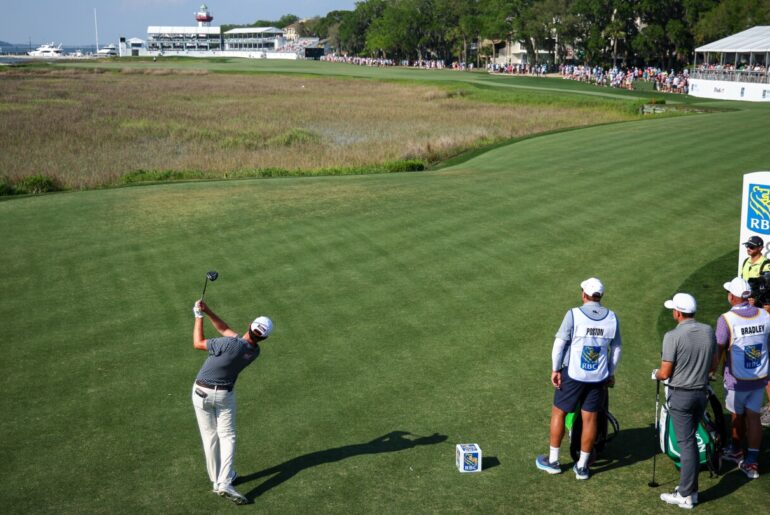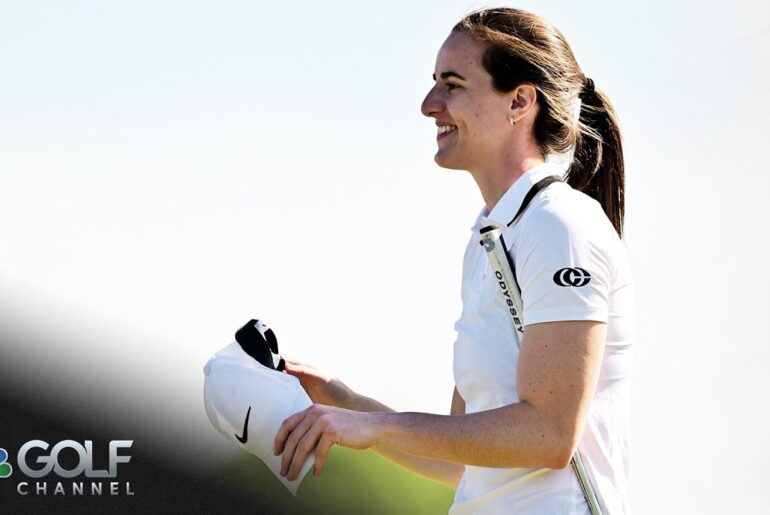JACKSON TOWNSHIP, N.J. — My dad always talked about winterizing.
Winterizing was especially important in Wisconsin, where we were from, and where the numbers on the thermometer looked a whole lot like a leaderboard — minus-10, minus-20 and so on. Shoot, in January back home, the thermometer played at a Woods 2000 clip. Anyway, you had to winterize certain things, so that when spring finally sprung, they were ready. And that meant, for example, checking your tires and your fluids on your car. And sealing your windows. And on and on. We can end there. This is not a home improvement site. But it is a game improvement one, which made me wonder:
Was there a golf equivalent to covering your outdoor AC? And, if so, could I write about it?
Yes, actually. And yes, hopefully.
To help with the latter, I talked with Kelan McDonagh. He’s the director of instruction at scenic Metedeconk National Golf Club and a GOLF Teacher to Watch. And a believer in players being ready on tee one of day one of golf season, wherever and whenever that may be when the snow has melted and the sun shines longer.
In short, he’s a winterizer whom my dad would be proud of. So I asked a couple of questions:
Who’s winterizing good for? Beginners? Average players? Low handicappers?
All of ’em, McDonagh said.
Why the beginners?
“They need to be able to when they see the ball hit the screen and see it flying in the air or whatever, that’s a positive for them. That’s generally what they’re looking to get out of it,” McDonagh said. “Building the basics of grip, set-up, understanding ball position, distance from the ball — it’s very easy to work on that in a short period of time indoors. It’s not something that needs to be done on the range for hours on end.”
Why the average players?
“They’re maybe looking for a breakdown of their swing,” McDonagh said. “They maybe plateaued a little bit with how they’re playing. They’ve started out at a certain index, came down and sat there for maybe a couple of months, a couple of years, and they need another set of eyes on their swing to take it to the next level. It could be a big change, it could be a grip change, it could be understanding where the club should be in the backswing. It could be something that’s going against them there.
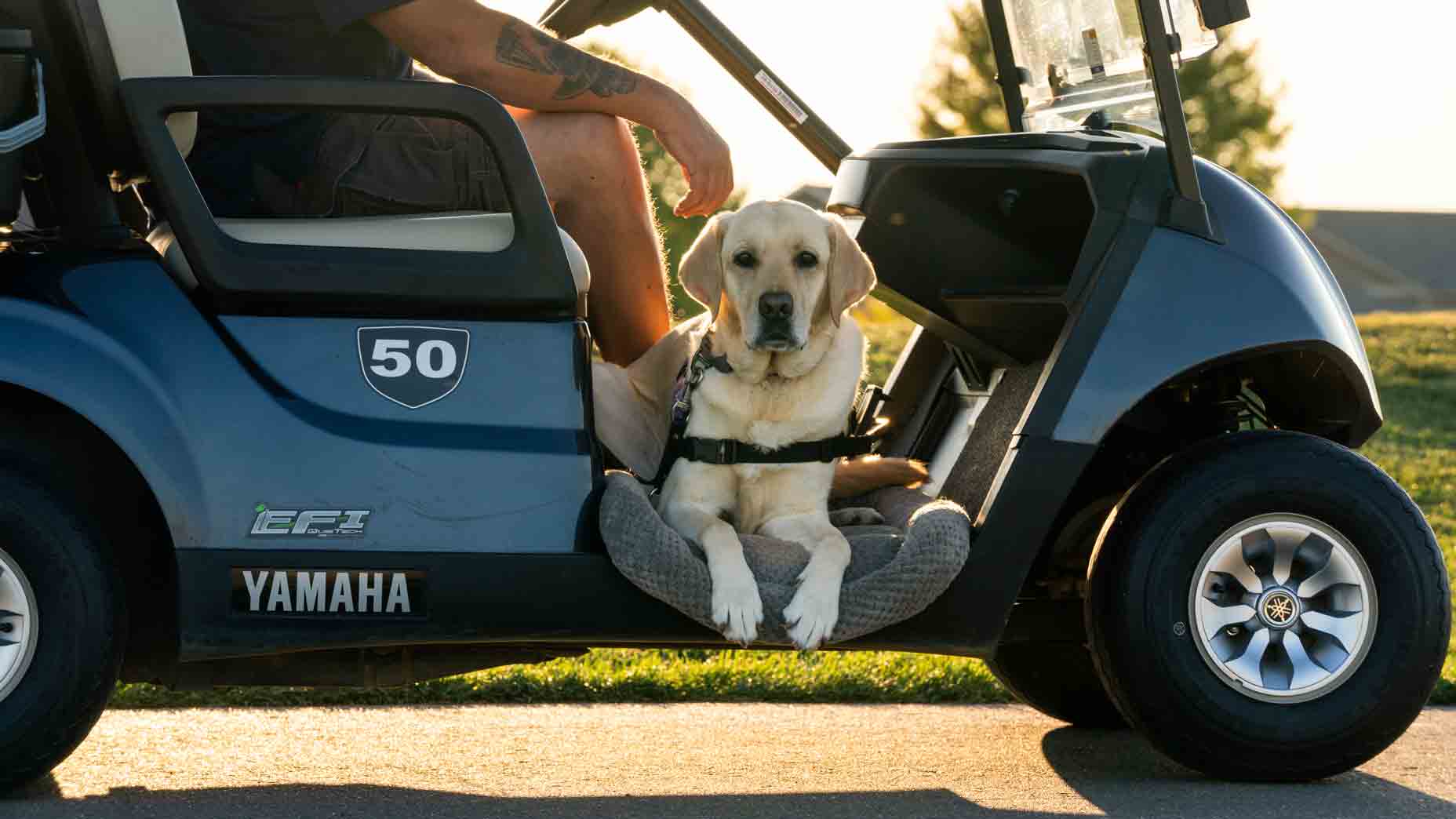
A golf course marshal was dying. Then he felt his best friend’s paw
By:
Nick Piastowski
“So for that golfer that already plays and understands how to play and has achieved success but has kind of regressed a little bit, it might be time for the everyday golfer to go and get a genuine look at how they’re moving, how they’re swinging. And in that same breath, that could come down to how they just naturally physically move. Their body limitations might be the reason that their golf game has plateaued. So mobility work, flexibility work, yoga, whatever it is, you work out a little bit more, lose a few pounds, generate some speed that way.”
Why the more advanced players?
“So your top-class amateurs, your pros, they’re at a level where their game is already good enough to compete,” McDonagh said. “So they might be working on trying to generate more speed and understand different ways to use the ground.”
The most important thing in winterizing
At this point as we talked, McDonagh offered what he called the most important thing in winterizing.
The coach.
“Go to somebody that your friends recommend or that you’ve heard about, somebody you can trust,” he said. “Take what they’re telling you and don’t change it, because any swing change we make, as [Top 100 Hall of Fame Teacher] Mike Adams always says, we only rent it. So if I come in, somebody comes in here for an hour and I change their grip, they’re renting that for that hour. It’s not going to feel great. They’ve got to go away and put the work in until they own it.
“And the difference that they’re going to see in their golf game when they own the changes that they were asked to make just makes the process of having more fun on the golf course a lot easier.”
Were there a few steps an average player could use to winterize?
There were. McDonagh had three.
Step one? Develop a plan.
“I think the most important thing for anyone trying to get better is to understand how they move and how they’re designed to swing a golf club,” McDonagh said. “As we know in today’s world, you go on Instagram for hours, you go on YouTube for hours, you can find golf tips from any corner of the globe. They’re not necessarily going to benefit you — they might benefit me, they might not benefit you, and vice versa. So, I think if somebody is actually serious about using the offseason, the winter months, to come out of the blocks firing in March and April, you’ve got to put a plan in place, whether it’s a three-month plan, four-month plan, five-month plan. Find an instructor that you’re going to work with regularly. Ask them, their honest opinion, what they see, where the leaks are. Is it an oil change? Do I need new tires? Is it a grip change? Do I need to change my clubs? Is my equipment affecting me? Am I getting too old for my clubs? Am I getting too fast for my clubs? Whatever it could be, it could be a host of different things.”
Step two? Find a coach you can relate to.
“Somebody you enjoy going to see, that you can understand and communicate with,” McDonagh said. “Because we’ve all been there. I’ve taken lessons for years where I’ve driven for hours, I’ve stood in the room for an hour or two hours, and I’ve left, got back in the car, and like, I didn’t understand any of it, I didn’t get any of it. And that may happen. You can shop around.
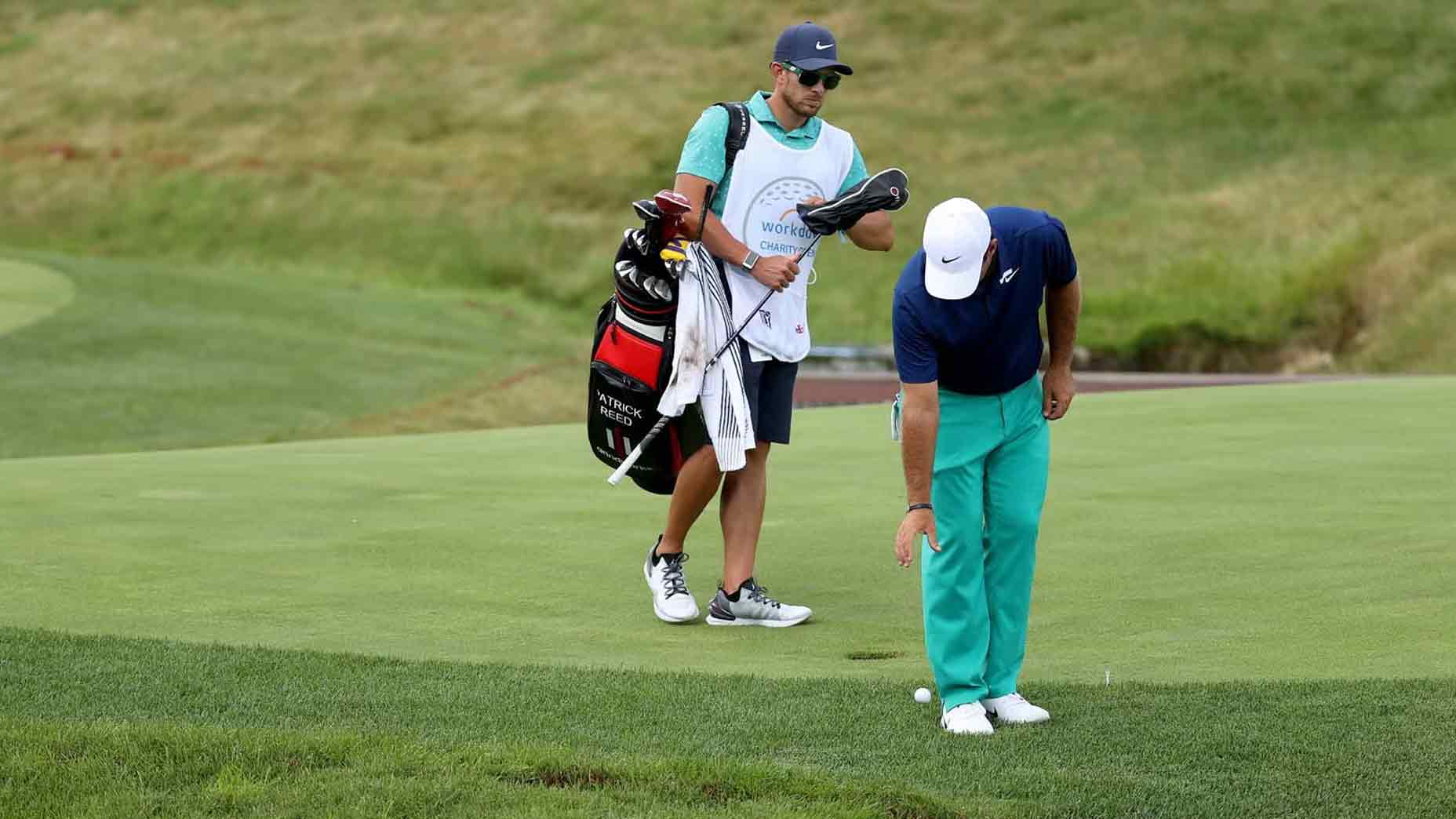
The common golf mistake that’s making you miss greens
By:
Maddi MacClurg
“I mean, I don’t know how many golf coaches within a 15-, 20-mile radius of any of us on planet Earth. Online lessons also work. So in the offseason now, I go on Skillest, I’ll do online lessons, where I can remotely teach people wherever, to New York or Arizona or Ireland or Australia or wherever they are. And that can work two ways, where they send videos over, I send videos back, or you can do a live video stream, where you’re actually looking at them at an indoor set-up working on what you’re doing.”
Step three? Dedicate the time.
“And dedicating the time,” McDonagh said, “goes in line with making sure you write down your goals, like what is it I’m actually trying to achieve here. Do I want to get a little bit faster? Do I want to improve my ball striking? Do I need to compress my irons a little bit better? And just going to a respected golf coach, you’ll be able to see that straight off the bat on what’s causing the reasons for the plateauing of your golf game.
“And then obviously we all would love to, when the doors open up at the driving ranges in March and April, we’d all love to walk onto the first tee feeling ready and confident in the changes we’ve made. But it takes time. I mean, if you look on social media, the tour events that happen every week, we see constant videos of the best players in the world making golf swings in really slow motion. Like, we cannot make a change to our golf swing at full speed. At least, I haven’t met somebody who can. I don’t think I ever will. So understanding the intricacies and the delicacy of trying to make changes, but you’ve got to work at it at a slow speed and then build it up, build it up, set appropriate goals for the offseason or the next 12 months or whatever it may be, and just keep relating that back to your coach and seeing where your game can go.”
Editor’s note: For more on golf at Metedeconk National Golf Club, please click here. And for more information on how to donate money to help McDonagh’s dad, who is battling cancer, please click here.
“>

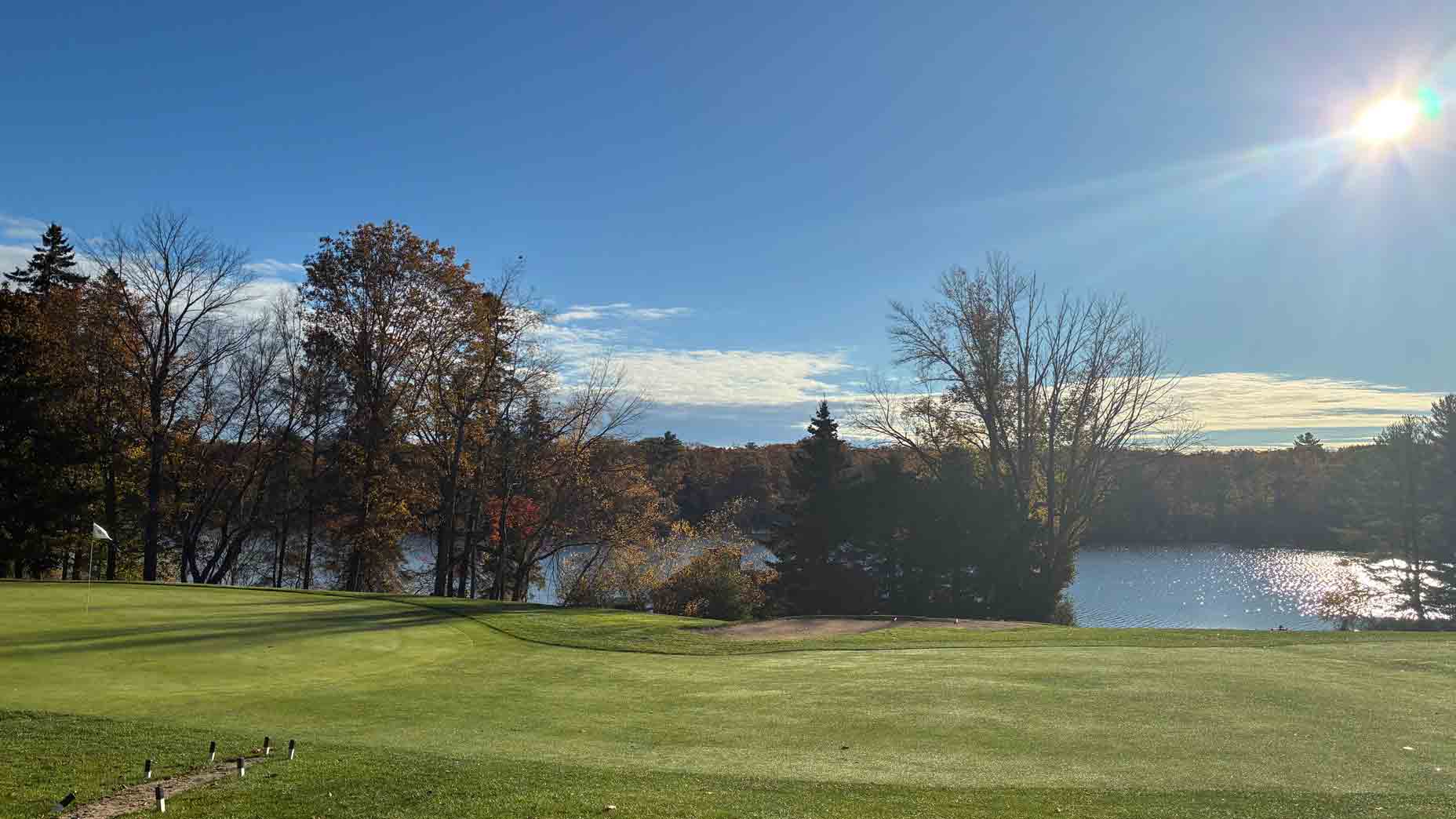
![Juniper Hill golf rates likely to rise; aquatic center to remain unchanged [Image]](https://www.fogolf.com/wp-content/uploads/2025/11/7685_1.jpeg)

